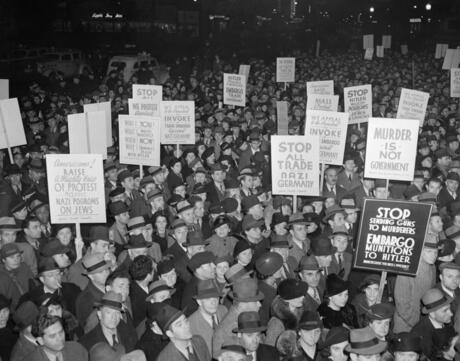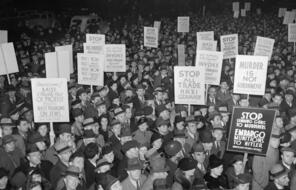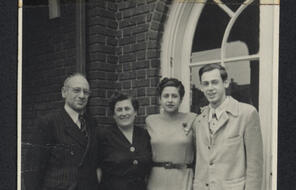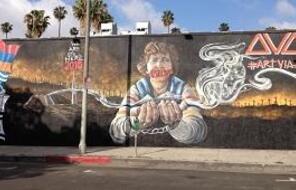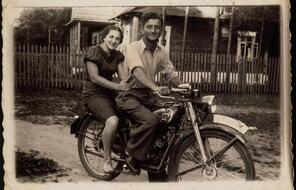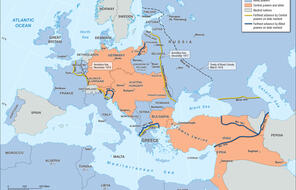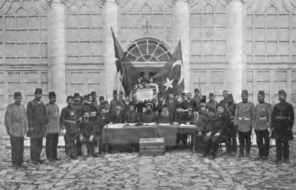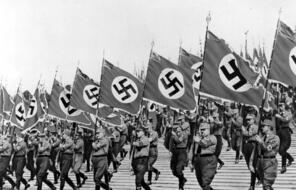The Refugee Crisis
In the years leading up to America’s direct involvement in World War II, a significant number of European Jews wished to emigrate to America but were unable to do so for various reasons. They faced financial, governmental, and societal challenges. Without outside assistance, they would remain trapped in Europe, facing the growing threat of Nazism.
Germany’s annexation of Austria (the Anschluss) in March 1938 brought approximately 200,000 additional Jews under Nazi rule. President Roosevelt called for an international conference on the refugee crisis. Delegates from 32 countries gathered in Evian, France, in July 1938, but most countries refused to change their laws to assist Jewish refugees. In mid-1938, nearly 140,000 Germans and Austrians, most of whom were Jews, had applied for US visas. Within a year, that number had increased to more than 300,000, creating an 11-year waiting list.
It was very difficult to immigrate to the United States. In 1924, the US Congress passed the Johnson-Reed Act in order to set limits on the maximum number of immigrant visas that could be issued per year to people born in each country. These quotas were designed to limit the immigration of people considered “racially undesirable,” including southern and eastern European Jews. After 1938, only 27,370 people born in Germany and Austria could be granted visas to immigrate to the United States each year. In most years, the US government issued far fewer visas than the maximum allowed.
The US government made no exceptions for refugees escaping persecution beyond exempting them from having to take a literacy test, and it did not adjust the immigration laws in the 1930s or 1940s. The waiting lists for US immigrant visas grew as hundreds of thousands of Jews attempted to flee Europe.
Kristallnacht
In the evening and early morning of November 9–10, 1938, Nazi party leaders unleashed a wave of antisemitic violence across Germany and its newly annexed territories, an event known as Kristallnacht. Storm troopers (SA) and Hitler Youth members burned hundreds of synagogues and ransacked thousands of Jewish-owned businesses, and the German police arrested nearly 30,000 Jewish men and boys, sending them to concentration camps. Though German newspapers reported that the violence had been spontaneous—a public retaliation in response to the assassination of a minor German diplomat in Paris by a Jewish teenager—the American diplomatic corps in Berlin immediately reported to colleagues in Washington, DC, that the attacks were obviously part of a “prearranged plan.”
In the United States, the Kristallnacht attacks were front-page news nationwide for several weeks. At his November 15 press conference, President Franklin D. Roosevelt said that the attack had “deeply shocked” the American public and announced that he was ordering the US ambassador in Germany to return home. The United States was the only nation to take this diplomatic action, and it would not have an ambassador in Germany again until after World War II ended in 1945. Yet Roosevelt did not ask the US Congress to reconsider the quota system that limited immigration. Labor Secretary Frances Perkins did persuade him to allow approximately 12,000 Germans—most of whom were Jews—then in the United States on temporary visitors’ visas to remain in the country indefinitely. President Roosevelt told reporters, “I cannot, in any decent humanity, throw them out.”
The refugee crisis intensified after Kristallnacht. Between 1939 and 1941, more than 300,000 Germans—mostly Jews—remained on the waiting list for immigration visas to the United States. For the first time during the period of Nazi rule, the US State Department issued the maximum number of visas legally allowed under the German quota. Other European countries had long waiting lists for US visas as well; the wait for a visa under the small Romanian quota (377), for instance, was 43 years long. The majority of these applicants were Jewish.
The Gap between Sympathy and Action
Americans could read, see, and hear news about Nazi persecution of European Jews and the events of World War II in their newspapers, on the radio, and in newsreels. Despite access to this information, public opinion polls from the period show that most Americans wanted to keep Jewish refugees from entering the country. Racism and antisemitism at home, economic hardship, fears of communism and spies, and eventually World War II all competed with the plight of endangered Jews for Americans’ attention. Also, even though Americans learned about atrocities, because of sensationalist propaganda during World War I, many were skeptical of the reports. As a result, Americans debated their country’s role in the world, including whether to admit refugees and, after September 1, 1939, whether to enter World War II.
The answer to both of these questions, from most Americans, was a resounding no. While the United States was only involved in World War I for a short period of time, the whole experience—and especially the perceived failures of the Treaty of Versailles and the League of Nations—convinced many Americans that staying out of Europe’s affairs was the best course of action. The United States was only involved in the final 19 months of the bloody conflict, between April 1917 and November 1918, but the war (and the influenza epidemic that immediately followed) resulted in the deaths of more than 116,000 American soldiers. The country became deeply isolationist. During the late 1930s, 20 years after World War I ended, 70% of Americans polled believed that American participation in the war had been a mistake.
